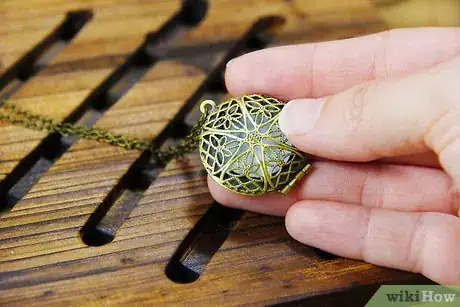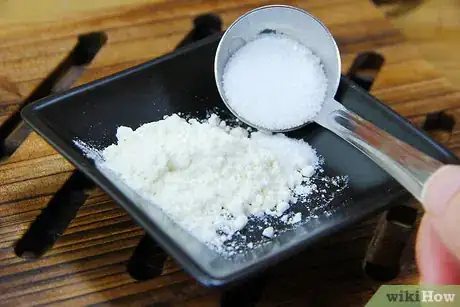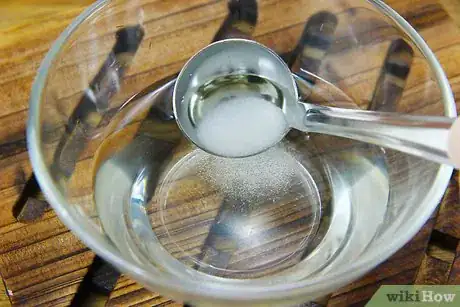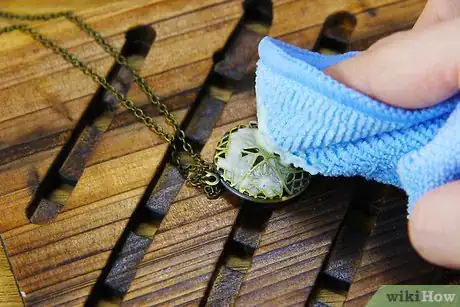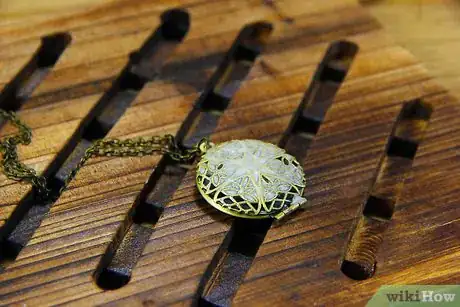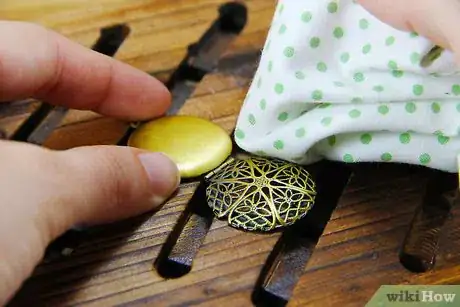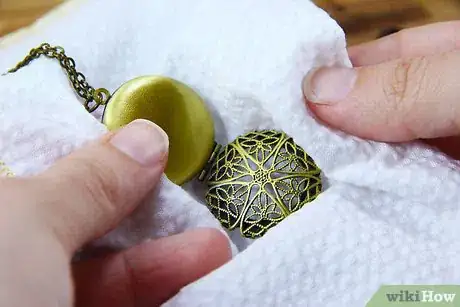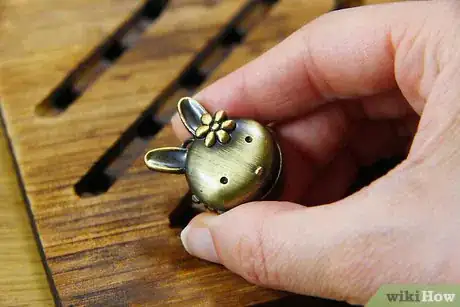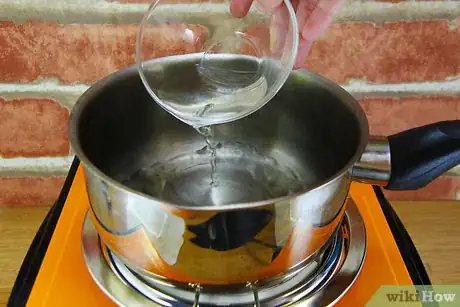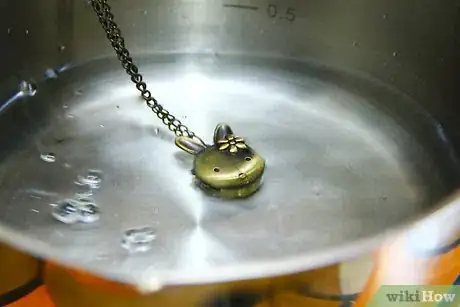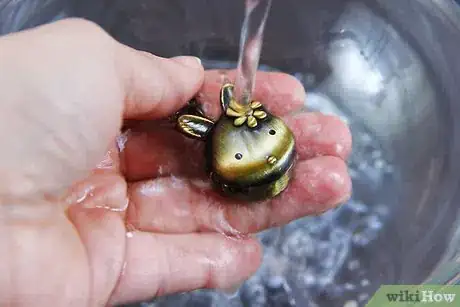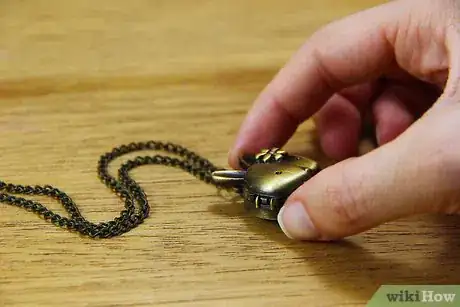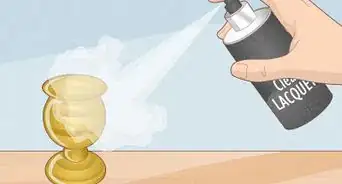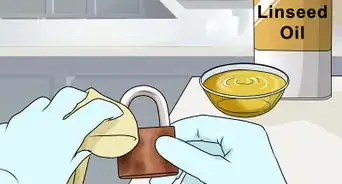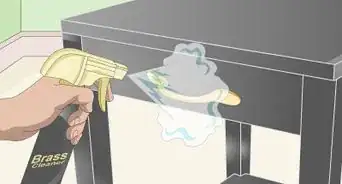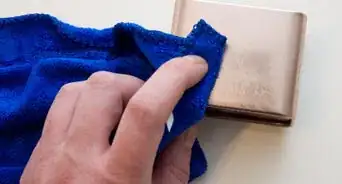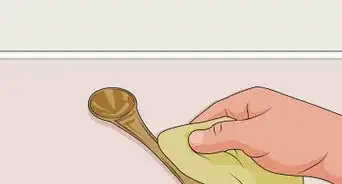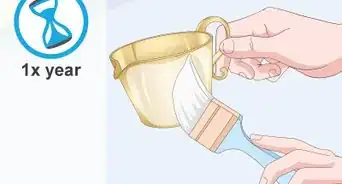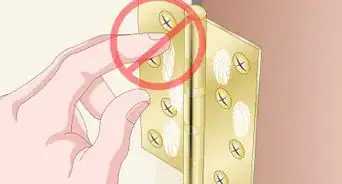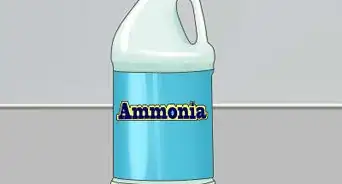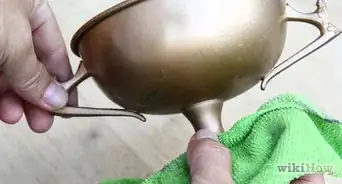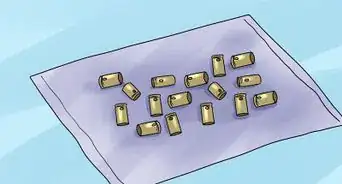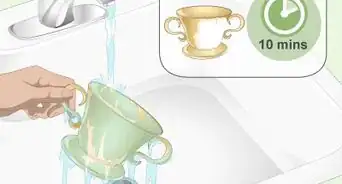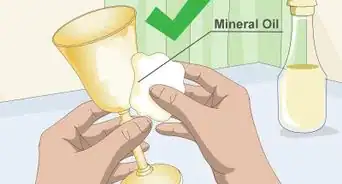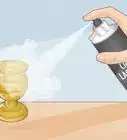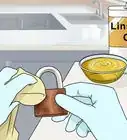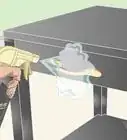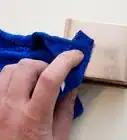This article was co-authored by Susan Stocker. Susan Stocker runs and owns Susan’s Green Cleaning, the #1 Green Cleaning Company in Seattle. She is well known in the region for outstanding customer service protocols — winning the 2017 Better Business Torch Award for Ethics & Integrity —and her energetic support of green cleaning practices.
This article has been viewed 82,874 times.
Brass can be cleaned with vinegar if it gets dirty, smudged, or stained. Lacquered and unlacquered, however, do require different cleaning methods. Unlacquered brass should generally be soaked in vinegar, while lacquered brass can be spot cleaned with a rag.
Steps
Making Your Cleaner
-
1Check whether your brass is lacquered. Examine your brass closely to see if it is lacquered. Lacquered brass is protected from tarnishing, while unlacquered brass is not. Lacquered brass does not tarnish and usually has a clear coat covering it. If your brass tarnishes easily and has no coating, it is unlacquered.[1]
- Often, brass will indicate if it's lacquered or unlacquered on purchase. If you still have the package, you can check to see if your brass is lacquered or unlacquered using that.
- It's also a good idea to make sure your brass is genuine brass and not just plated or imitation. Cleaning methods used for real brass could damage plated/imitation brass.[2]
-
2Make a paste for lacquered brass. You should only clean lacquered brass that is smudged. It generally does not require much cleaning.[3] To make a paste for lacquered brass, mix equal parts flour and salt together. Then, add vinegar until you have a thick, spreadable paste.[4]
- The precise amount of each ingredient varies depending on how much brass you're cleaning.
Advertisement -
3Make a liquid for unlacquered brass. Unlacquered brass requires soaking to clean. To make a liquid, mix together two parts white vinegar, 1/4 part salt, and two parts water.[5]
- Precise amounts of each ingredient vary depending on how much brass you're soaking. You need enough of the liquid to completely submerge each piece of brass.
Cleaning Your Lacquered Brass
-
1Apply your paste to the brass. Dip a soft, microfiber cloth in your paste. Use this to rub paste onto the brass. Cover the full surface, especially targeting areas that are smudged and stained.[6]
-
2Allow the paste to sit for an hour. A vinegar paste should sit on your brass for about an hour. After applying the paste, set a timer for an hour to let the paste sit.[7]
- Make sure the brass is undisturbed while you let the paste set. You can place the brass in a cabinet or cupboard so it's out of reach. If you're cleaning brass on something like a doorknob, make sure other household members know not to touch the doorknob while the brass is soaking in the paste.
-
3Rinse your brass. Use a damp cloth to rinse the paste off your brass. When you're done, the brass should be clean and smudge free.[8]
- Make sure to rinse the paste off completely to avoid damaging the brass.
- Remember to use a softer cloth. Abrasive cloths or sponges, like steel wool, can scratch brass.
-
4Dry your brass. Make sure to dry the brass thoroughly. Leaving it wet can cause damage. Rub your brass down with a dry, soft cloth until it's dry to the touch.[9]
Soaking Your Unlacquered Brass
-
1Check the brass for embellishments. Before soaking unlacquered brass, make sure it does not have any embellishments such as carvings. Embellishments will be harmed during the soaking process. It's best to spot clean unlacquered brass that comes with embellishments.[10]
- For unlacquered brass with heavy embellishments, consider professional cleaning.
-
2Bring your solution to a boil. Place your solution in a pot over high heat. Bring the solution to a boil.[11]
-
3Soak your brass in the solution. Submerge each piece of brass completely in the boiling solution. A quick dunk should remove dirt and grime from your brass.[12]
- Items like doorknobs should be removed using the proper tools before soaking.
- Use tongues or a spoon to remove brass from a boiling solution to avoid burning your fingers.
-
4Rinse the brass. Rinse the brass under running water. This will remove any excess debris and wash off any vinegar residue. Make sure to rinse the brass until the water runs clean. Leftover residue can damage brass.[13]
-
5Let the brass air dry. Unlacquered brass should be set in a safe place to air dry. Put it somewhere it will not be disturbed, such as a cupboard or cabinet. Air drying is necessary to prevent the brass from corroding.[14]
Expert Q&A
Did you know you can get expert answers for this article?
Unlock expert answers by supporting wikiHow
-
QuestionIs there anything else I can use to clean brass?
 Susan StockerSusan Stocker runs and owns Susan’s Green Cleaning, the #1 Green Cleaning Company in Seattle. She is well known in the region for outstanding customer service protocols — winning the 2017 Better Business Torch Award for Ethics & Integrity —and her energetic support of green cleaning practices.
Susan StockerSusan Stocker runs and owns Susan’s Green Cleaning, the #1 Green Cleaning Company in Seattle. She is well known in the region for outstanding customer service protocols — winning the 2017 Better Business Torch Award for Ethics & Integrity —and her energetic support of green cleaning practices.
Green Cleaning Expert Try ketchup! Rub gently, but thoroughly, putting ketchup on a cloth. Then rinse with warm water. Voila! If that doesn’t work, you might need something a little stronger, in which case you should rub a half lemon with table salt. Rub the lemon and salt all over it, then buff out with a clean cloth. If that doesn’t do the trick, go up a notch and use ⅔ Cream of Tartar and 1/3 lemon juice. Apply a thick paste all over the brass and let it sit for 35 minutes. Rinse with warm water, then buff and dry with a clean cloth.
Try ketchup! Rub gently, but thoroughly, putting ketchup on a cloth. Then rinse with warm water. Voila! If that doesn’t work, you might need something a little stronger, in which case you should rub a half lemon with table salt. Rub the lemon and salt all over it, then buff out with a clean cloth. If that doesn’t do the trick, go up a notch and use ⅔ Cream of Tartar and 1/3 lemon juice. Apply a thick paste all over the brass and let it sit for 35 minutes. Rinse with warm water, then buff and dry with a clean cloth. -
QuestionI have lacquered commemorative brass plates that have black pitting on them. How can I get the spots off if traditional methods (baking soda, salt, etc.) haven't been successful?
 ERROR409Community AnswerThis might be a bit of an unorthodox answer, but from my experience, acidity works best for tough spots on brass and other similar materials. Things like lemon juice and Coca-Cola can work well. Just let the item soak in the Coca-Cola or lemon juice for a few hours, or until you notice a difference.
ERROR409Community AnswerThis might be a bit of an unorthodox answer, but from my experience, acidity works best for tough spots on brass and other similar materials. Things like lemon juice and Coca-Cola can work well. Just let the item soak in the Coca-Cola or lemon juice for a few hours, or until you notice a difference.
References
- ↑ http://www.stain-removal-101.com/homemade-brass-cleaner.html
- ↑ Susan Stocker. House Cleaning Professional. Expert Interview. 8 November 2019.
- ↑ http://www.stain-removal-101.com/homemade-brass-cleaner.html
- ↑ https://newengland.com/today/living/cleaning/clean-brass/
- ↑ http://www.stain-removal-101.com/homemade-brass-cleaner.html
- ↑ https://www.bobvila.com/articles/how-to-clean-brass/#.WNG66GQrJPM
- ↑ https://www.bobvila.com/articles/how-to-clean-brass/#.WNG66GQrJPM
- ↑ https://newengland.com/today/living/cleaning/clean-brass/
- ↑ https://newengland.com/today/living/cleaning/clean-brass/
- ↑ http://www.stain-removal-101.com/homemade-brass-cleaner.html
- ↑ http://www.stain-removal-101.com/homemade-brass-cleaner.html
- ↑ http://www.stain-removal-101.com/homemade-brass-cleaner.html
- ↑ http://www.stain-removal-101.com/homemade-brass-cleaner.html
- ↑ http://www.stain-removal-101.com/homemade-brass-cleaner.html
- ↑ Susan Stocker. House Cleaning Professional. Expert Interview. 8 November 2019.
- ↑ Susan Stocker. House Cleaning Professional. Expert Interview. 8 November 2019.
About This Article
To clean tarnished brass with vinegar, mix 2 parts white vinegar, ¼ part salt, and 2 parts water in a pot and bring it to a boil. Then, use tongs to submerge your piece in the boiling solution for a few seconds. Next, rinse it under running water to wash off the vinegar and remove any excess debris. Finally, let it air dry completely to prevent the brass from corroding. To learn how to identify and clean lacquered brass, keep reading!
